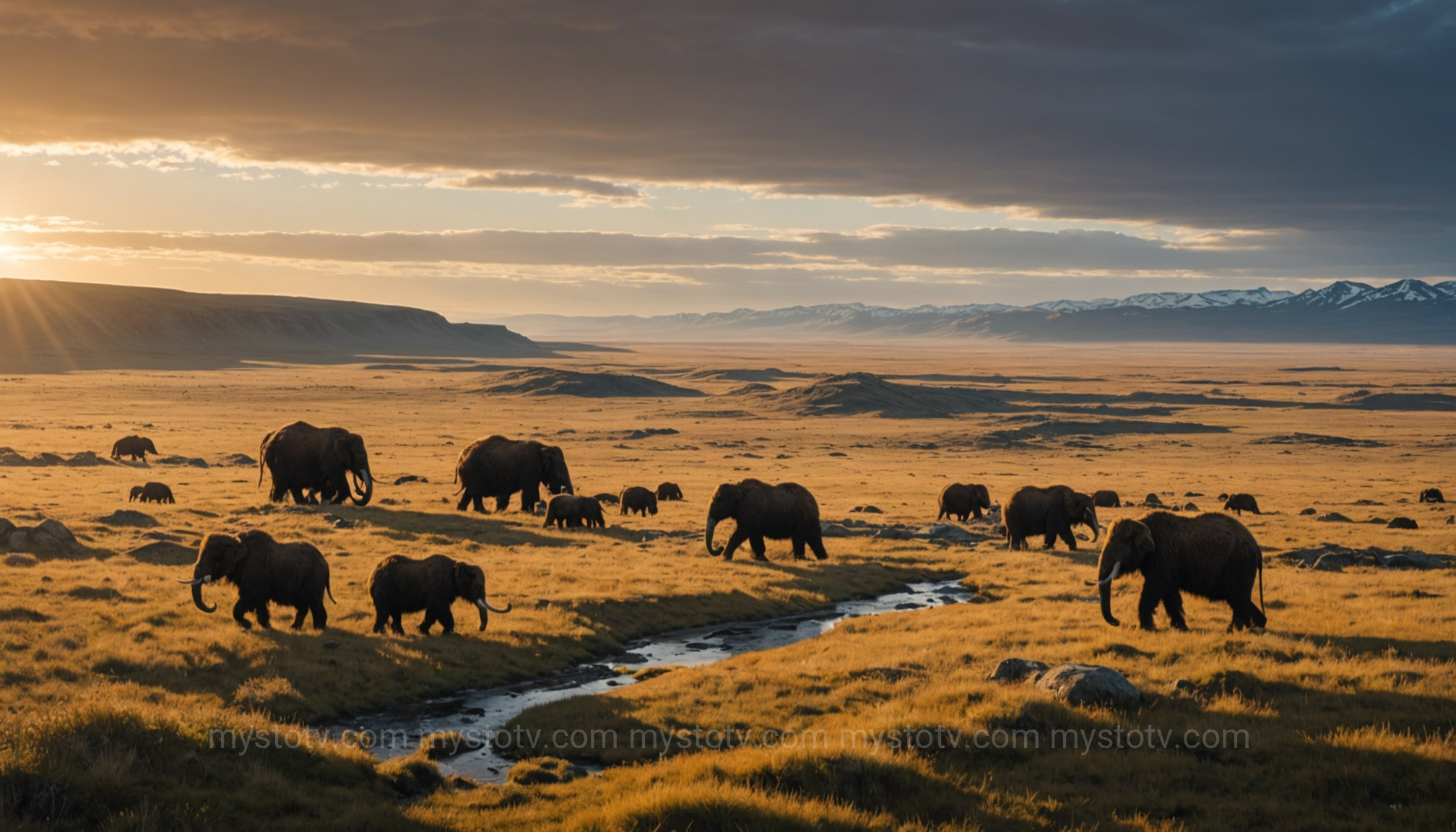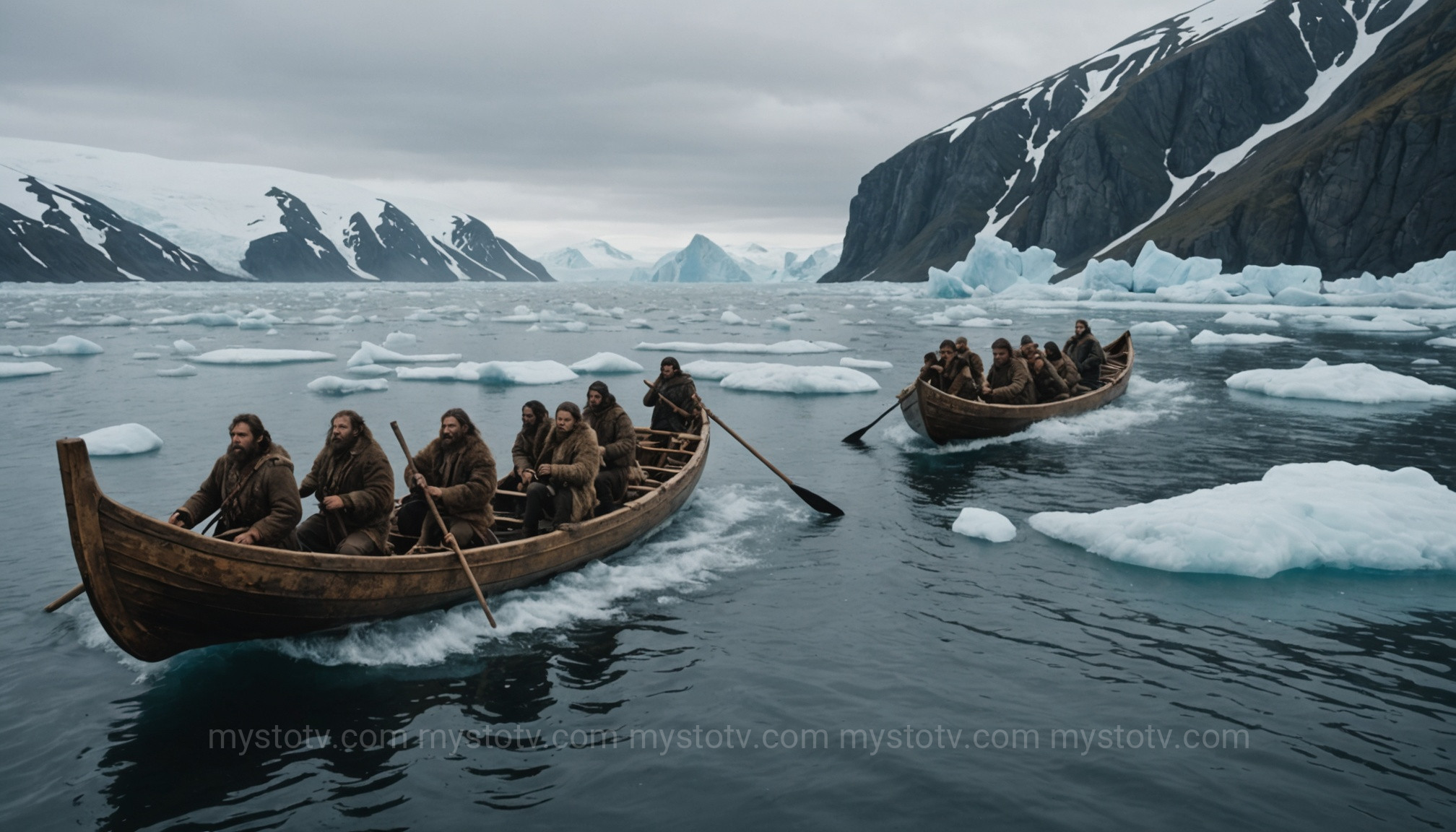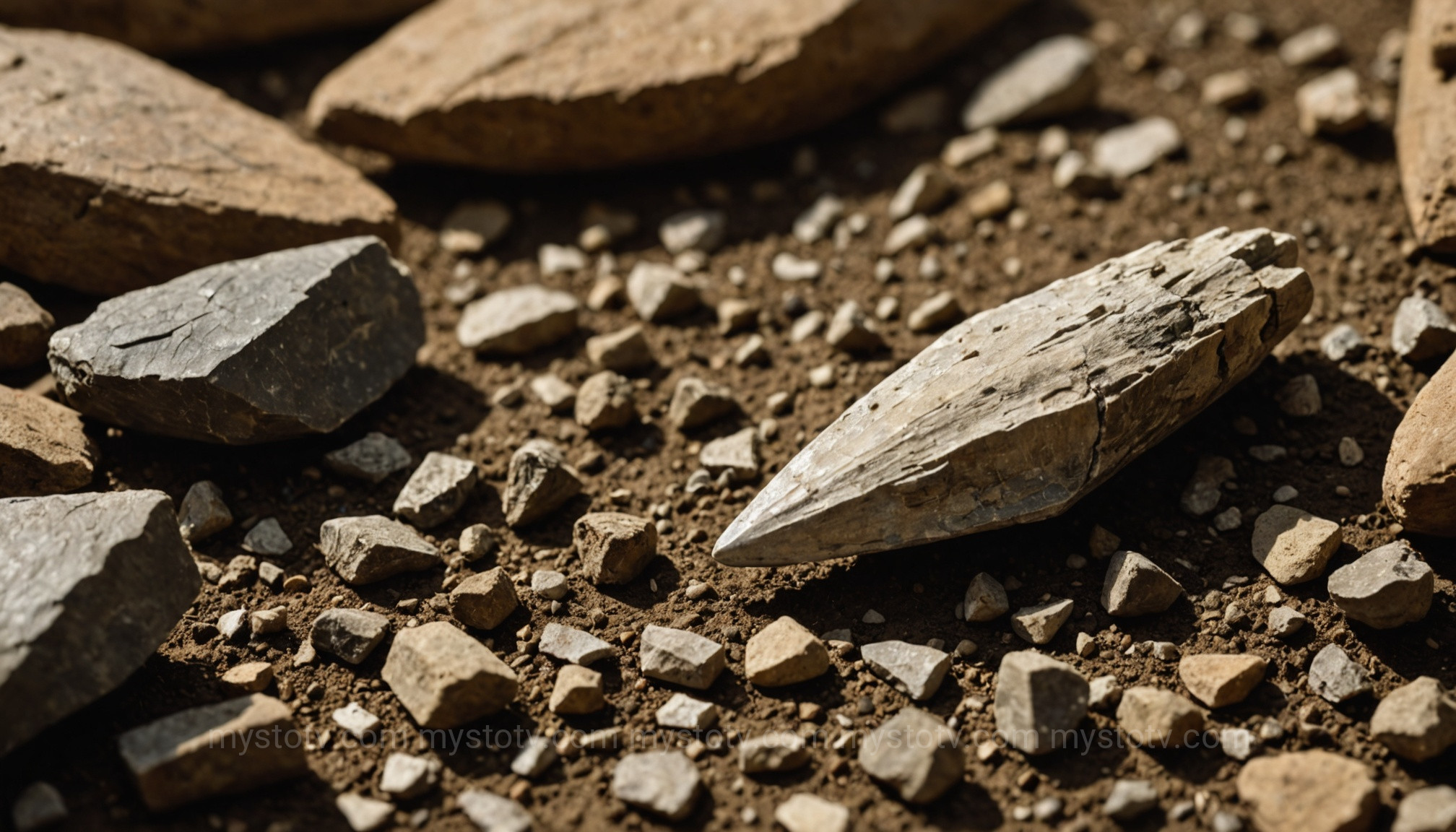I still remember the first time I truly understood the scale of our planet. Staring at a globe in my childhood classroom, my finger traced the seemingly tiny gap between the easternmost tip of Siberia and the western edge of Alaska. It looked impassable, a cold, watery void. My teacher explained that thousands of years ago, it wasn't a void at all. It was land—a vast, now-vanished subcontinent that provided the gateway for the first humans to enter the Americas. This was my introduction to the bering land bridge, a concept that transformed my understanding of history from a series of dates into a grand, epic story of human resilience and exploration. The story of the bering land bridge is not just about a geographic feature; it's the foundational chapter of human history in an entire hemisphere.
Contents
- 1 Unveiling Beringia: The Lost World of the Bering Land Bridge
- 2 The People of the Bering Land Bridge: Who Were the First Americans?
- 3 The Great Migration: Timing and Motivation for Crossing the Bering Land Bridge
- 4 Life on the Move: The Journey Across the Bering Land Bridge and Beyond
- 5 A New World: The Legacy of the Bering Land Bridge Migration
- 6 FAQ: Demystifying the Bering Land Bridge
- 7 Conclusion: A Journey Still Unfolding
- 8 References
Unveiling Beringia: The Lost World of the Bering Land Bridge

When we hear the term "land bridge," it's easy to picture a narrow, precarious isthmus—a simple corridor connecting two continents. The reality of the bering land bridge, a region known to scientists as Beringia, was far more magnificent. It was a massive, habitable subcontinent, at its peak more than 1,000 kilometers wide, exposed as global sea levels dropped by as much as 125 meters during the Last Glacial Maximum (c. 26,500 to 19,000 years ago). So much of the world's water was locked up in colossal continental ice sheets that vast coastal shelves around the globe became dry land.
The Geography of a Sunken Continent
Beringia connected what is now eastern Siberia with modern-day Alaska. Its total area was immense, roughly the size of Texas and Alberta combined. This wasn't a temporary, muddy path but a stable, long-lasting landscape. Its existence was not a brief anomaly but a recurring feature of Earth's ice ages. The lowlands that formed the heart of the bering land bridge are now submerged beneath the waters of the Bering and Chukchi Seas. Modern bathymetric maps (maps of the ocean floor) clearly show this sunken landscape, revealing ancient river valleys and shorelines, giving us a ghost image of a lost world.
The "Mammoth Steppe" Ecosystem
Far from being a barren, icy wasteland, much of Beringia was a unique ecosystem known as the "mammoth steppe." It was a cold, dry grassland, too arid to support the massive glaciers that covered much of North America and Europe. This environment was dominated by nutrient-rich grasses, herbs, and willow shrubs, creating a productive landscape capable of supporting vast herds of large mammals. The cast of characters was spectacular: woolly mammoths, steppe bison, ancient horses, caribou, and predators like scimitar-toothed cats and giant short-faced bears. For the humans who lived there, Beringia was not a path to be crossed, but a homeland rich with resources.
Analysis: The crucial insight here is that the bering land bridge was not merely a transit route but a long-term ecological refuge. Re-framing it as "Beringia," a vast and habitable region, helps us understand why people could have lived there for thousands of years. This environment, rich in megafauna, provided the necessary resources to sustain a human population, making it a destination in its own right, not just a means to an end.
The People of the Bering Land Bridge: Who Were the First Americans?
The story of the bering land bridge is fundamentally a human one. Archaeological and genetic evidence have painted an increasingly clear, though still incomplete, picture of the people who undertook this monumental journey. They were not aimless wanderers but skilled hunter-gatherers, possessed of the knowledge and technology to survive in one of the world's most challenging environments.
Genetic Origins in Ancient Siberia
Modern genetic studies, analyzing the DNA of both ancient remains and contemporary Indigenous peoples of the Americas, have traced the origins of the First Americans to Northeast Asia. The founding population appears to be a mix of Ancient North Siberians and a distinct East Asian lineage. Groundbreaking research, such as a 2021 study published in Nature, has pinpointed a population living in the region of the Yana River in Siberia around 31,000 years ago as having a genetic profile ancestral to those who would later populate Beringia and, eventually, the Americas. These were modern humans, anatomically and cognitively identical to us, equipped with a sophisticated cultural toolkit.
The Beringian Standstill Hypothesis
One of the most compelling theories to emerge from genetic data is the "Beringian Standstill Hypothesis." This model suggests that the ancestors of Native Americans did not simply walk from Siberia to Alaska in one continuous migration. Instead, they may have lived in the genetic isolation of Beringia for a significant period—perhaps for several thousand years. During this "standstill," they were cut off from the parent populations in Asia by harsh climates or glaciers, and from the Americas by the massive ice sheets to the east. It was during this period of isolation that the unique genetic markers found today in Indigenous American populations likely arose. Beringia became an evolutionary crucible, forging a distinct people.
Analysis: This section adds critical nuance to the migration story. The Beringian Standstill Hypothesis challenges the simplistic idea of a direct, rapid A-to-B migration. It posits the bering land bridge as a homeland where a unique population, the "Ancestral Native Americans," developed. This explains the genetic distinctiveness of Indigenous peoples of the Americas from their Asian ancestors and highlights the immense time scale involved in the peopling of the New World.
The Great Migration: Timing and Motivation for Crossing the Bering Land Bridge
Why leave a resource-rich homeland like Beringia? And when did the final push into the heart of the Americas occur? The answers lie in a complex interplay of environmental change, ecological opportunity, and human drive. The crossing of the bering land bridge and the subsequent dispersal was not a single event, but a process likely spanning millennia and involving multiple waves of people.
Following the Megafauna Herds
![]()
The most straightforward motivation was subsistence. The people of Beringia were big-game hunters. Their lives were intimately tied to the movements of the vast herds of mammoth, bison, and horses that populated the mammoth steppe. As these animals expanded their ranges eastward into Alaska, the humans who depended on them would have followed. This wasn't a conscious decision to "discover a new continent" but a practical, generation-by-generation expansion into new hunting territories. The pursuit of food was the engine of this great migration.
Climate Change and Opening Corridors
The gateway from Beringia into the rest of North America was blocked for thousands of years by two massive ice sheets: the Laurentide Ice Sheet covering eastern and central Canada, and the Cordilleran Ice Sheet blanketing the western mountains. Around 14,000 to 13,000 years ago, as the climate warmed, these two ice sheets began to retreat. A separation between them formed what archaeologists call the "ice-free corridor," an inland route running through what is now Alberta and British Columbia. For a long time, this was believed to be the primary route south for the people who had crossed the bering land bridge.
Debating the Dates: When Did They Arrive?
For decades, the "Clovis-first" model dominated archaeological thought. It held that the first people arrived in the Americas around 13,500 years ago, their presence marked by distinctive, fluted spear points known as Clovis points. However, evidence from archaeological sites across the Americas has shattered this consensus. Sites like Monte Verde in southern Chile have been securely dated to at least 14,500 years ago—a thousand years before the Clovis culture and potentially before the inland ice-free corridor was even fully habitable. Other sites, such as the White Sands footprints in New Mexico, suggest an even earlier human presence, possibly as far back as 23,000 years ago, throwing established timelines into question.
Analysis: The timing and motivation for leaving Beringia are at the heart of the current scientific debate. While following game provides a clear "why," the "when" and "how" are complex. The challenges to the Clovis-first model, supported by sites like Monte Verde, suggest that our understanding of this migration is still evolving. The story of the bering land bridge is not a settled fact but a dynamic field of discovery, with each new find forcing a re-evaluation of old theories.
Life on the Move: The Journey Across the Bering Land Bridge and Beyond

Surviving the journey from the bering land bridge into an unpeopled continent required immense skill, resilience, and technological ingenuity. These were not primitive people; they were masters of their environment, carrying a sophisticated toolkit in both their hands and their minds.
Tools and Technology of Paleo-Indians
The archaeological record gives us a glimpse into their lives. They possessed advanced stone tool technology, including the creation of tiny, razor-sharp "microblades" that could be set into bone or antler handles to make efficient composite tools like knives and projectile points. They knew how to select the best stone, how to fashion it precisely, and how to create lethal hunting weapons. Equally important was their mastery of organic materials. They crafted tailored, layered clothing from animal hides, essential for surviving the arctic and subarctic cold. They built durable shelters and had a deep, systematic knowledge of the animal behaviors and plant life that formed the basis of their survival.
Coastal vs. Interior Routes: Two Competing Theories
The discovery of pre-Clovis sites like Monte Verde has given significant weight to an alternative to the "ice-free corridor" model: the "coastal migration theory." This theory proposes that people first moved south from the bering land bridge not through the interior, but along the Pacific coastline. Even during the ice age, pockets of ice-free land, or refugia, may have existed along the coast. These first peoples may have used boats, traveling down the "kelp highway"—a rich marine ecosystem of kelp forests that would have provided abundant food sources like fish, shellfish, seals, and seabirds. This route could explain how people arrived in South America so early. Proving this theory is difficult, as the ancient coastline they would have followed is now deep underwater.
Analysis: The debate between the coastal and interior routes highlights the adaptability of the first Americans. They were not committed to a single subsistence strategy. Whether they were big-game hunters trekking through an inland corridor or maritime people navigating a kelp highway, they demonstrated an incredible ability to adapt to new and diverse environments. The journey from the bering land bridge was not one single path, but likely a series of complex movements by different groups using different strategies.
A New World: The Legacy of the Bering Land Bridge Migration
The arrival of humans in the Americas via the bering land bridge was one of the last great continental settlement events in human history. It marked the final chapter in our species' global expansion and had profound and lasting consequences for the ecosystems and the human story of two continents.
Rapid Dispersal Throughout the Americas
Once south of the great ice sheets, humans spread with astonishing speed. Within just a few thousand years, descendants of the Beringian populations had reached Tierra del Fuego at the southernmost tip of South America. This rapid expansion is a testament to their adaptability, as they moved through every imaginable environment, from deserts and mountains to rainforests and plains. They were the ultimate pioneers, developing new technologies and cultural traditions to thrive in a mosaic of new lands. This rapid dispersal is why the ancestors of today's Indigenous peoples are found across the entirety of the Americas.
The Clovis Culture and the Megafauna Extinction

Around 13,000 years ago, a distinct cultural pattern, known as the Clovis culture, appeared across much of North America. It is defined by its beautifully crafted, fluted spear points. The appearance of Clovis hunters coincides closely with the extinction of about 35 genera of large mammals in North America, including mammoths, mastodons, and giant sloths. For a long time, the "overkill hypothesis" suggested that these highly effective hunters were solely responsible. Today, most scientists believe the truth is more complex, with a combination of climate change, habitat loss, and human hunting pressure all contributing to the demise of the megafauna that had thrived on the bering land bridge and beyond.
Enduring Genetic and Cultural Heritage
The most important legacy of the Beringian migration is, of course, the people. The intrepid groups who first crossed the bering land bridge are the direct ancestors of the hundreds of distinct Indigenous nations and cultures that exist throughout the Americas today. Their journey is a story of incredible perseverance that laid the foundation for tens of thousands of years of human history in the Western Hemisphere. The genetic and cultural diversity of modern Native Americans is a living testament to the success of those first pioneers.
Analysis: The legacy of the bering land bridge migration is dual-sided. It represents a story of incredible human success—the rapid and successful colonization of two continents. However, it is also intertwined with a major ecological event—the late Pleistocene megafauna extinction. This legacy forces us to consider the profound and often immediate impact humans have when entering new ecosystems, a theme that remains relevant today.
FAQ: Demystifying the Bering Land Bridge
The epic story of the migration to the Americas often raises specific questions. Here are answers to some of the most common ones.
Is the Bering Land Bridge still there?
No, not as dry land. The bering land bridge is currently submerged under about 50 to 60 meters (160 to 200 feet) of water, forming the Bering Strait. However, the landmass itself—the shallow continental shelf—is still very much there on the seafloor. If global sea levels were to drop significantly again in a future ice age, Beringia would re-emerge.
How do scientists know the Bering Land Bridge existed?
Scientists have multiple lines of evidence. First, bathymetric mapping of the seafloor clearly shows a broad, shallow platform connecting Asia and North America. Second, sediment cores drilled from the seafloor contain terrestrial peat, pollen from land plants, and even insect fossils, proving it was once dry land. Finally, the fossil remains of land animals like mammoths and bison have been dredged up from the bottom of the Bering Strait by fishing boats.
Could ancient people have sailed to the Americas instead?
Yes, and this is a key part of the modern scientific discussion. The "coastal migration theory" suggests that at least some groups used watercraft to travel down the Pacific coast. This model helps explain how people could have bypassed the continental ice sheets and reached South America so early. It's likely that both land-based travel across the heart of the bering land bridge and coastal, boat-assisted travel played a role in the peopling of the Americas.
Conclusion: A Journey Still Unfolding
The story of crossing the bering land bridge is more than an ancient history lesson; it is a profound testament to human courage, adaptability, and the unceasing drive to explore. From the windswept mammoth steppe of Beringia to the shores of Tierra del Fuego, this migration represents one of the greatest chapters in the peopling of the planet. It was a journey made not over years, but over millennia, by people who were not simple wanderers but sophisticated survivors who founded the rich and diverse cultures of the Americas. As new archaeological sites are discovered and genetic analysis becomes more powerful, the details of this epic story continue to be refined. The tale of the bering land bridge is not closed; it is a living science, a journey into the past that is still unfolding before our very eyes.
References
- Potter, Ben A., et al. "Current understanding of the earliest occupations of North America." Journal of Archaeological Research, vol. 30, 2022, pp. 1-66.
- Sikora, Martin, et al. "The population history of northeastern Siberia since the Pleistocene." Nature, vol. 570, 2019, pp. 182-188. https://www.nature.com/articles/s41586-019-1279-z
- Tamm, Erika, et al. "Beringian Standstill and Spread of Native American Founders." PLoS ONE, vol. 2, no. 9, 2007, e829. https://journals.plos.org/plosone/article?id=10.1371/journal.pone.0000829
- Bennett, Matthew R., et al. "Evidence of humans in North America during the Last Glacial Maximum." Science, vol. 373, no. 6562, 2021, pp. 1528-1531.
- Dillehay, Tom D., et al. "Monte Verde: Seaweed, Food, Medicine, and the Peopling of the Americas." Science, vol. 320, no. 5877, 2008, pp. 784-786.